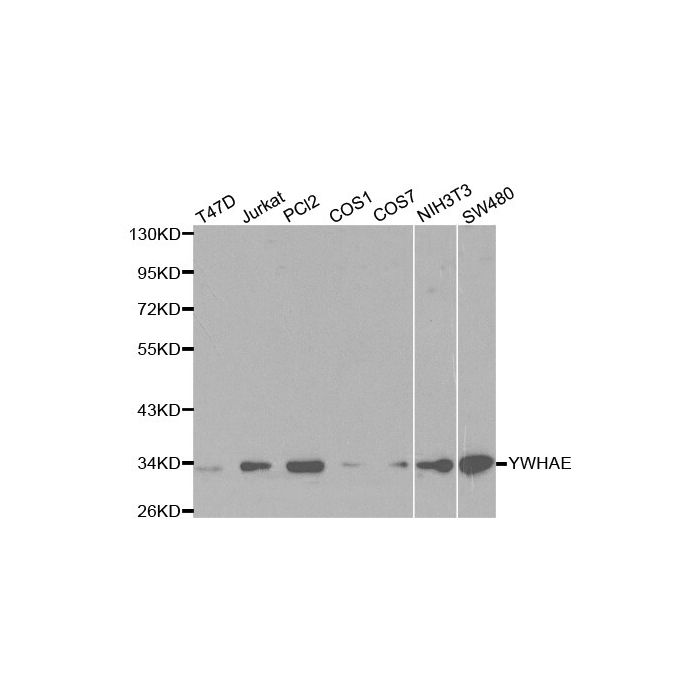14-3-3 ε polyclonal, anti-human, mouse, rat
€388.00
In stock
SKU
BS6109
Background:
14-3-3 proteins regulate many cellular processes relevant to cancer biology, notably apoptosis, mitogenic signaling and cell-cycle checkpoints. Seven isoforms comprise this family of signaling intermediates, denoted 14-3-3 β, γ, ε, ζ, η, θ and σ. 14-3-3 proteins form dimers that present two binding sites for ligand proteins, thereby bringing together two proteins that may not otherwise associate. These ligands largely share a 14-3-3 consensus binding motif and exhibit serine/threonine phosphorylation. 14-3-3 proteins function in broad regulation of these ligand proteins, by cytoplasmic sequestration, occupation of interaction domains and import/export sequences, prevention of degradation, activation/repression of enzymatic activity and facilitation of protein modification, and thus loss of expression contributes to a vast array of pathogenic cellular activities.
Alternative Name:
14-3-3 protein epsilon, 14-3-3E, YWHAE, 1433E
Application Dilution: WB: 1:500 - 1:2000
Specificity: 14-3-3 ε polyclonal antibody detects endogenous levels of 14-3-3 ε protein.
Immunogen:
Recombinant full length Human 14-3-3 ε.
MW: ~ 29 kDa
Swis Prot.: P62258
Purification & Purity:
The antibody was affinity-purified from rabbit antiserum by affinity-chromatography using epitope-specific immunogen and the purity is > 95% (by SDS-PAGE).
Format:
1mg/ml in PBS with 0.1% Sodium Azide, 50% Glycerol.
Storage:
Store at 4°C short term. Aliquot and store at -20°C long term. Avoid freeze-thaw cycles.
For research use only, not for use in diagnostic procedure.
14-3-3 proteins regulate many cellular processes relevant to cancer biology, notably apoptosis, mitogenic signaling and cell-cycle checkpoints. Seven isoforms comprise this family of signaling intermediates, denoted 14-3-3 β, γ, ε, ζ, η, θ and σ. 14-3-3 proteins form dimers that present two binding sites for ligand proteins, thereby bringing together two proteins that may not otherwise associate. These ligands largely share a 14-3-3 consensus binding motif and exhibit serine/threonine phosphorylation. 14-3-3 proteins function in broad regulation of these ligand proteins, by cytoplasmic sequestration, occupation of interaction domains and import/export sequences, prevention of degradation, activation/repression of enzymatic activity and facilitation of protein modification, and thus loss of expression contributes to a vast array of pathogenic cellular activities.
Alternative Name:
14-3-3 protein epsilon, 14-3-3E, YWHAE, 1433E
Application Dilution: WB: 1:500 - 1:2000
Specificity: 14-3-3 ε polyclonal antibody detects endogenous levels of 14-3-3 ε protein.
Immunogen:
Recombinant full length Human 14-3-3 ε.
MW: ~ 29 kDa
Swis Prot.: P62258
Purification & Purity:
The antibody was affinity-purified from rabbit antiserum by affinity-chromatography using epitope-specific immunogen and the purity is > 95% (by SDS-PAGE).
Format:
1mg/ml in PBS with 0.1% Sodium Azide, 50% Glycerol.
Storage:
Store at 4°C short term. Aliquot and store at -20°C long term. Avoid freeze-thaw cycles.
For research use only, not for use in diagnostic procedure.
| Is Featured? | No |
|---|
Write Your Own Review

